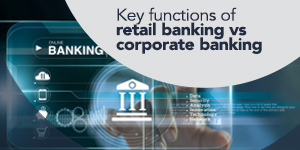The principal objective of financial institutions is to provide individuals and corporations with financial assistance. However, while doing so, the said financial institutions must safeguard themselves from underlying risks. Credit risk underwriting is the process through which financial risk is gauged with the help of data extracted from clients. It typically involves loans, insurance, real estate, investments, etc. This process helps financial institutions to assess the risk they are willing to undertake and the extent of risk involved with a particular client. Financial institutions use credit risk analysis models to ascertain the ‘Probability of Default’ (POD) of a potential borrower. The models provide vital information on a client’s credit risk at any particular time. Failing to assess the risk associated with a borrower can result in huge losses for the lender. Main Types of Credit Risk Credit Default Risk- Credit default risk is when a borrower defaults on the repayment obligation or has crossed 90 days past the due date. Although this risk can be a result of broader economic changes, it affects all credit-sensitive financial transactions. Concentration Risk- For instance, when a borrower majorly relies on a single supplier/buyer for his line of business, he indulges in a high level of concentration risk. The lack of diversification can threaten the overall operations of the borrower and the lender. Country Risk- This risk is on a broader level; when a country defaults on foreign currency repayment obligations. This may happen due to a country’s political or economic instability which impacts the value of assets or operating profits. Underwriting Models widely used to ascertain Credit Risk Traditional Approach- Certain certified credit risk analysis agencies offer ready data to institutions to ascertain risks involved in different sectors of operation. For instance, they provide a complete analysis of risks associated with mortgage loans, industrial loans, real estate loans, education loans, etc. Financial institutions pick this ready data and implement it through their functionalities to avoid credit risk. Rating Based Approach- Financial institutions arrive at ‘Expected Loss’ through a formula-driven method where Probability of Default (POD), Exposure at Default (EAD) and Loss Given Default (LGD) is calculated. Credit risk analysts derive a percentage and determine whether or not the risk association by offering credit is acceptable to the financial institution. Advanced Rating Approach- Based on algorithms and the aforementioned attributes, financial institutions can calculate the risk quotient and implement advanced technology, framework and modeling to obtain detailed information. Conclusion Risk is inevitable and cannot be mitigated completely by financial institutions. Rather, they can work smartly in a technology-driven manner to minimize it and forecast credit risk with greater accuracy. Financial institutions should consider the probability of default, loss given default and exposure at default to function in a more cultured manner. Underwriting models have evolved over time and at present financial institutions can indulge in better and more accurate models to reduce the risk associated with the credit system.
Month: July 2022
Key Functions of Retail Banking VS Corporate Banking
Retail Banking and Corporate Banking; two established dominant verticals in the financial ecosystem cater to business-to-consumer (B2C) and business-to-business (B2B) segments of society. The retail business is a model built for the general public while the corporate banking model aims at MSMEs and large-sized businesses. Key Differences Key Basis Retail Banking Corporate Banking Nature of Products and Services Standardized Tailor-made Customer/Client Base Large Small Processing Cost Low High Value of Transactions Low value of transactions High value of transactions Profitable Low High Customer Relationship On low priority On high priority Retail Banking The main goal of financial institutions is to provide the population with financial assistance, whether credit or wealth management. The combined net profit of all the retail banks in India amounts to Rs. 224,054 crores as of May 2021. With Citi Bank looking to exit the retail market in India owing to its strategic review, large conglomerates like Axis Bank are bidding for the said fragment owing to its high clientele base and prospects. Key Functions Retail banks offer a variety of products and services to the general public. Fundamental services include prototypical savings accounts, types of mortgages, loans, etc at high-interest rates. It also includes services like plastic cards and remittance services which prove to be profitable offerings for retail banks. The financial personality of an individual helps in deciding the service and the extent to which an offering can be availed. For instance, High Networth Individuals (HNI) receive tailor-made services along with a personal relationship manager owing to the business they give to a bank. Corporate Banking Corporate banking is a subset of business banking that involves a range of banking services that are offered only to corporates. The clientele base associated with business banking is limited yet regarded as a high priority owing to the magnitude of transactional business with the banks. Key Functions Corporate banks earn profits by sanctioning credit. Their area of operation also includes managing the cash flow of the corporate, treasury handling, currency conversion, etc. Depending upon expansion plans and needs, corporate banks devise tailor-made credit options for corporations they cater to. For instance, equipment loans, manufacturing loans, etc. They also indulge in trade finance, bill collection, credit letters, payroll management and much more for the corporations they represent. With intense competition taking over the market, corporate banks also offer real estate analysis, portfolio evaluation, debt and equity structuring, asset management and so on. Source: https://seekingalpha.com/article/3604876-indian-banks-set-to-boom-consider-buying-state-bank-of-india Conclusion Most large banks have a separate division for the retail and corporate functions as both guarantee great profit. The existence of both wings of banking is essential for the healthy functioning of local and global economies. While one brings in deposits from personal customers (Retail Banking), which in turn enables corporate banking to offer expansion assistance to companies, further leading to the creation of jobs that aid in the expansion of economies.

